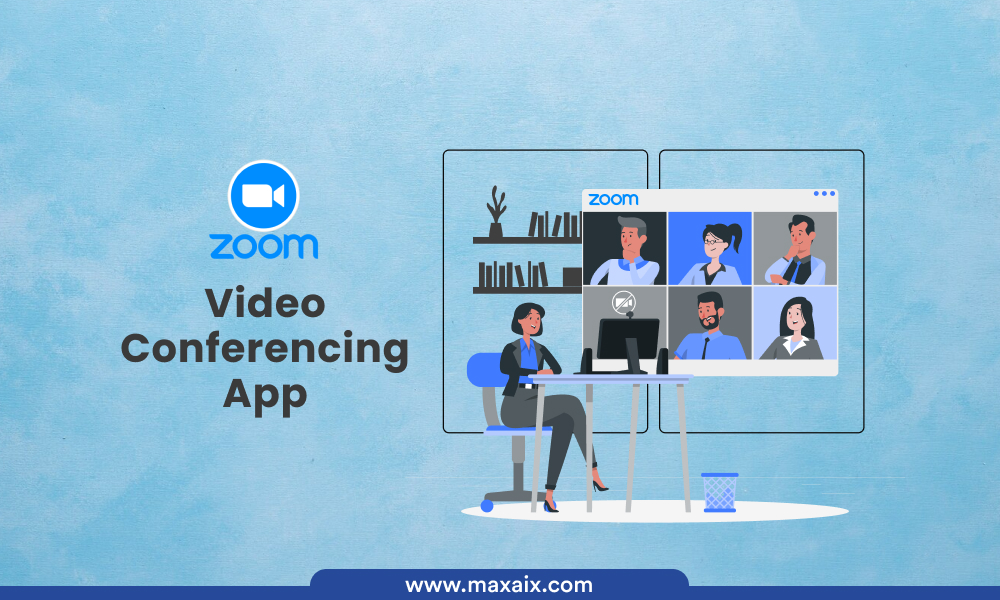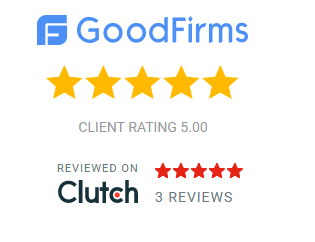The Tech Stack Behind Zoom Video Conferencing App

What Is Zoom, and What Does It Do?
Zoom is a comprehensive video conferencing platform that has become synonymous with remote communication, connecting people worldwide through seamless virtual meetings, webinars, and collaborative sessions. Launched in 2011 by Eric Yuan, a former Cisco executive, Zoom has grown into a global tech giant, particularly gaining prominence in recent years due to the surge in remote work and virtual interactions.
Core Functionality of Zoom:
- Video Conferencing:
High-Quality Video Calls: Zoom provides a reliable and high-quality video conferencing experience, supporting meetings with a large number of participants.
Real-Time Collaboration: Participants can engage in face-to-face conversations, fostering a sense of connection and collaboration. - Webinars and Virtual Events:
Host and Attend Webinars: Zoom allows users to host webinars, reaching a broader audience for virtual events, seminars, and educational sessions.
Interactive Webinar Features: Attendees can actively participate through Q&A sessions, polls, and interactive discussions. - Collaboration Tools:
Chat Functionality: Users can communicate through text-based chat during meetings or within dedicated chat channels.
File Sharing: Seamless sharing of documents, presentations, and other files to enhance collaboration.
Annotation Features: Participants can annotate and mark up shared content in real-time. - Security Measures:
End-to-End Encryption: Zoom prioritizes the security of user data through end-to-end encryption, ensuring privacy during meetings.
Meeting Controls: Hosts have granular control over meetings, managing participants, enabling waiting rooms, and controlling access. - Integration with Productivity Tools:
Calendar Integrations: Zoom seamlessly integrates with popular calendar applications, making scheduling and joining meetings efficient.
Collaboration with Third-Party Apps: Zoom offers integrations with various third-party applications and productivity tools for enhanced functionality.
Evolution Beyond Video Conferencing:
Zoom has evolved beyond its initial identity as a video conferencing tool. It now serves as a unified communications platform, offering a range of features to cater to diverse needs, including business meetings, educational sessions, healthcare consultations, and social gatherings. With its user-friendly interface and commitment to continuous improvement, Zoom continues to play a pivotal role in shaping the landscape of remote communication.
A Brief History of Video Conferencing Technology
Evolution of Virtual Communication
Early Attempts and Analog Technologies
In the nascent stages of virtual communication, the concept of video conferencing emerged as a futuristic idea. Early attempts were characterized by analog technologies that struggled to deliver reliable and high-quality communication.
Digital Advancements and the Internet Era
The shift to digital technologies and the advent of the internet in the late 20th century marked a significant leap in video conferencing capabilities. This era witnessed the exploration of digital protocols and improved compression algorithms.
Zoom’s Impact on Modern Video Conferencing
The 21st century saw the rise of Zoom as a transformative force in modern video conferencing. Established in 2011 by Eric Yuan, a former Cisco executive, Zoom aimed to address the limitations of existing video conferencing solutions, laying the foundation for a new era in virtual communication.
Who uses Zoom?
Zoom’s Diverse User Base
- Businesses and Enterprises
- Educational Institutions
- Healthcare and Telemedicine
- Social and Personal Use
Global Reach of Zoom
- Zoom’s Penetration in Various Countries
- Cultural and Demographic Factors Contributing to Zoom’s Popularity
The Tech Behind Zoom: How Does Zoom Work?
Overview of Zoom’s Architecture
- Client-Server Model
- Cloud-Based Infrastructure
- Decentralized Media Servers
Core Technologies Powering Zoom
- WebRTC for Real-Time Communication
- H.264 Video Codec for Compression
- AAC Audio Codec for High-Quality Audio
- Scalability and Load Balancing Techniques
The Video Architecture of Zoom—The Tech Stack
Video Transmission in Zoom
- Understanding Video Encoding and Decoding
- Adaptive Bitrate Streaming for Quality Adjustment
- Managing Latency and Synchronization
Network Infrastructure
- Leveraging Content Delivery Networks (CDNs)
- Redundancy and Failover Mechanisms
- Ensuring High Availability and Reliability
Zoom Integrations
Extending Functionality Through Integrations
- Third-Party Apps and Services
- API and SDK Support for Custom Solutions
- Collaboration with Productivity Tools and CRM Platforms
Primaries: Zoom Video Conferencing App Features
In-Depth Exploration of Zoom’s Features
- HD Video and Audio Conferencing
- Virtual Backgrounds and Filters
- Screen Sharing and Annotation
- Breakout Rooms for Group Discussions
- Meeting Scheduling and Calendar Integrations
- Security Measures: Encryption and Authentication
What Are the Advantages of Zoom?
8.1 Simplicity
8.1.1 User-Friendly Interface
- Intuitive Design: Zoom’s interface is designed for ease of use, allowing users to join and host meetings effortlessly.
- Minimal Learning Curve: The simplicity of the platform ensures quick adoption by users of all technical backgrounds.
8.1.2 Infrastructure
- Cloud-Based Infrastructure: Zoom’s reliance on cloud technology ensures scalability, flexibility, and reliable performance.
- Global Data Centers: Strategic placement of data centers globally minimizes latency and enhances user experience.
8.1.3 Meeting Features
- Comprehensive Features: Zoom offers a rich set of meeting features, including video, audio, screen sharing, and collaboration tools.
- Virtual Backgrounds and Filters: Enhancing user engagement with virtual backgrounds and filters during meetings.
8.1.4 Security
- End-to-End Encryption: Robust security measures, including end-to-end encryption, safeguard user data and meeting integrity.
- Meeting Controls: Hosts have granular control over meetings, ensuring a secure environment.
8.1.5 Cost
- Affordability: Zoom provides cost-effective plans for businesses and individuals.
- Free Tier: A free tier allows users to experience Zoom’s features before committing to a paid subscription.
Primaries: Zoom Video Conferencing App Features
In-Depth Exploration of Zoom’s Features
- HD Video and Audio Conferencing
- Virtual Backgrounds and Filters
- Screen Sharing and Annotation
- Breakout Rooms for Group Discussions
- Meeting Scheduling and Calendar Integrations
- Security Measures: Encryption and Authentication
Monetization: How Does Zoom Make Money?
- Subscription Plans: Zoom offers tiered subscription plans catering to different user needs.
- Enterprise Solutions: Tailored solutions for large organizations and enterprises.
- Webinar and Event Hosting: Additional charges for hosting large-scale webinars and virtual events.
Zoom Technology Stack: A Combination of Platforms, Tools, and Languages
11.1. For Native Applications
a. iOS App Development
Programming Language: Swift
Frameworks: UIKit, Core Animation
IDE: Xcode
b. Android App Development
Programming Language: Java, Kotlin
Frameworks: Android SDK
IDE: Android Studio
11.1.1. For Web-Based Apps
a. Frontend Development
Languages: HTML5, CSS3, JavaScript
Frameworks: React.js, Angular, Vue.js
b. Backend Development
Server-Side Language: Node.js, Python, Ruby
Web Server: Nginx, Apache
11.1.2. Turnkey Scripts
Real-Time Communication
WebRTC (Web Real-Time Communication): For browser-based real-time communication.
WebSocket: Facilitates bidirectional communication between the server and clients.
What Is the Technology Behind Zoom?
Core Technologies
WebRTC: Fundamental for real-time audio and video communication.
H.264 Video Codec: Efficient video compression for high-quality streaming.
AAC Audio Codec: Ensures high-quality audio transmission.
Zoom’s Server Infrastructure
Cloud-Based Architecture
Cloud Service Provider: Primarily hosted on Amazon Web Services (AWS) and supplemented by Oracle Cloud.
Distributed Servers: Servers distributed globally for low-latency access.
Zoom’s Front-End Technology Stack
User Interface Development
React.js: Building interactive and dynamic user interfaces.
Redux: State management for scalable applications.
How Zoom Works: A High-Level Architecture
Client-Server Model
Client-Side: Native apps or web browsers
Server-Side: Zoom servers handling meeting coordination and data transmission.
Communication Protocols
WebRTC: Facilitates real-time communication.
HTTPS: Ensures secure data transmission.
Benefits of Using Zoom for Business Use
Seamless Connectivity
HD Video and Audio: High-quality communication for professional meetings.
Webinar and Virtual Event Features: Scalable solutions for large audiences.
Collaboration Tools: Chat, File Sharing, and Annotation.
Development Cost: What Is the Cost to Build Apps Like Zoom?
Factors Influencing Development Cost
Platform: iOS, Android, Web
Features: Video Quality, Collaboration Tools, Security Measures
Infrastructure: Server Costs, Cloud Service Provider
Limitations: What Meeting Apps Like Zoom Need to Improve?
Scalability Challenges
Server Overload: Occasional issues during peak usage times.
Security Concerns: Addressing and preventing instances of unauthorized access.
User Experience
User Interface: Continuous improvement for enhanced usability.
Accessibility Features: Ensuring inclusivity for users with diverse needs.
How Zoom Compares to Other Video Conferencing Software
Zoom’s Competitive Edge
User-Friendly Interface: Zoom’s intuitive design enhances user experience.
Scalability: Zoom accommodates both small businesses and large enterprises.
Feature-Rich Platform: A comprehensive set of tools for diverse needs.
Comparisons with Competitors
Microsoft Teams
Integration with Microsoft 365.
Team collaboration features.
Google Meet
Seamless integration with Google Workspace.
Advanced security features.
Cisco Webex
Focus on security and compliance.
Integration with third-party apps.
Drawbacks of Using Zoom for Business Use
Privacy Concerns
Incidents of Zoombombing: Unauthorized access to meetings.
Data Security Issues: Instances of data breaches.
Dependence on Internet Connectivity
Challenges in Low-Bandwidth Environments: Issues in video and audio quality.
Reliance on Stable Internet Connection: Prone to disruptions.
Limited Integration Capabilities
Integration Challenges with Some Tools: Compatibility issues.
Third-Party App Limitations: Constraints in integrating specific applications.
How to Build a Video Conferencing App Like Zoom
Key Considerations
Defining Requirements: Understanding target audience and use cases.
Selecting Core Features: Identifying essential functionalities.
Choosing the Right Tech Stack: Determining the technology to build upon.
Development Process
User Interface (UI) Design: Creating an intuitive and user-friendly interface.
Backend Development: Building the server-side infrastructure.
Integration of Features: Incorporating video, chat, and collaboration tools.
How Does Maxaix Help You Build a Video Conferencing App?
Expertise in Custom App Development
Tailored Solutions: Adapting to specific business requirements.
Scalability: Ensuring the app can grow with the user base.
Continuous Support: Post-launch assistance and updates.
Integration with Advanced Technologies
AI and Machine Learning Integration: Enhancing user experience.
Security Measures: Implementing robust data protection features.
Optimization for Different Platforms: Ensuring compatibility across devices.
Conclusive: How Does Zoom Prove to Be a Learning-Communication Platform?
Educational Significance of Zoom
Remote Learning: Facilitating virtual classrooms and online education.
Collaborative Tools for Students: Enhancing engagement and interaction.
Accessibility and Inclusivity: Enabling participation from diverse locations.
Conclusion
In conclusion, the tech stack behind Zoom is a complex amalgamation of cutting-edge technologies, making it a leading force in the realm of video conferencing. Despite some drawbacks, Zoom’s competitive edge, alternatives, the process of building a similar app, and Maxaix’s role in development showcase the comprehensive landscape of video conferencing technology. The educational impact further solidifies Zoom’s position as a transformative learning-communication platform.
Frequently Asked Questions
Q1: How secure is Zoom for sensitive business communications?
A1: Zoom employs end-to-end encryption and security measures to protect sensitive business communications.
Q2: Can Zoom be used for free?
A2: Yes, Zoom offers a free tier with basic features, and premium plans with advanced features are available at different price points.
Q3: How does Zoom compare to other video conferencing platforms?
A3: Zoom competes with platforms like Microsoft Teams, Google Meet, and Cisco Webex. The choice depends on specific requirements and preferences.
Q4: What are the key features of Zoom that make it popular?
A4: Key features include high-quality video and audio, screen sharing, chat functionality, webinar hosting, and breakout rooms.
Q5: Does Maxaix provide support for developing video conferencing apps?
A5: Yes, Maxaix offers comprehensive support for developing video conferencing apps, including consultation, development, and integration services.
Q6: What is the future outlook for video conferencing technology?
A6: The future of video conferencing technology involves advancements in AI integration, augmented reality features, and improved security measures.
Q7: How can businesses address the limitations of using Zoom for remote work?
A7: Businesses can address limitations by implementing additional security measures, providing training for effective use, and exploring alternative platforms.
Q8: What factors should businesses consider when choosing a video conferencing platform?
A8: Factors to consider include security features, scalability, user interface, integration capabilities, and overall cost.
Q9: Is it feasible to build a custom video conferencing app for specific business needs?
A9: Yes, building a custom video conferencing app is feasible, and Maxaix can provide the necessary expertise and support.


